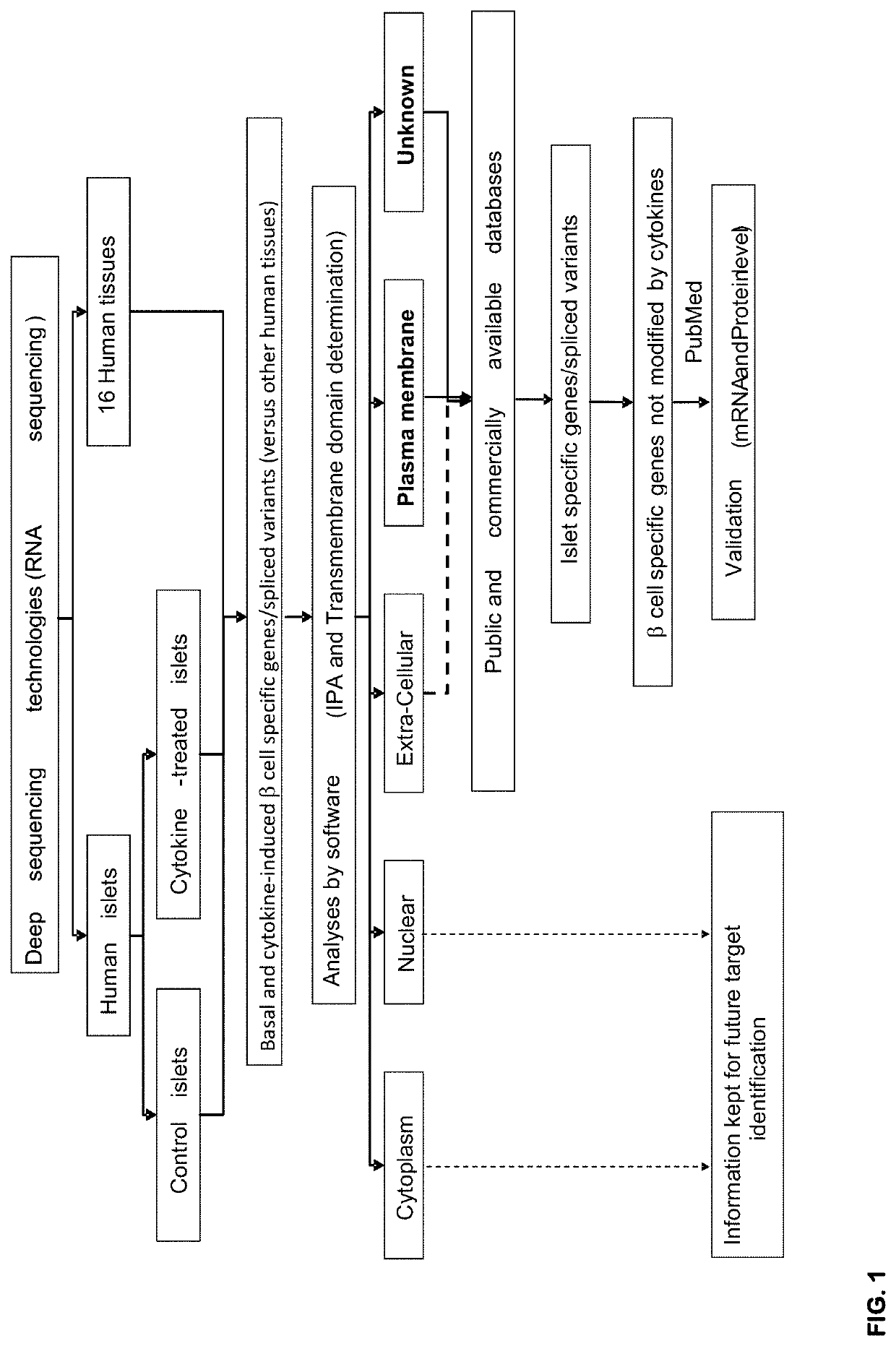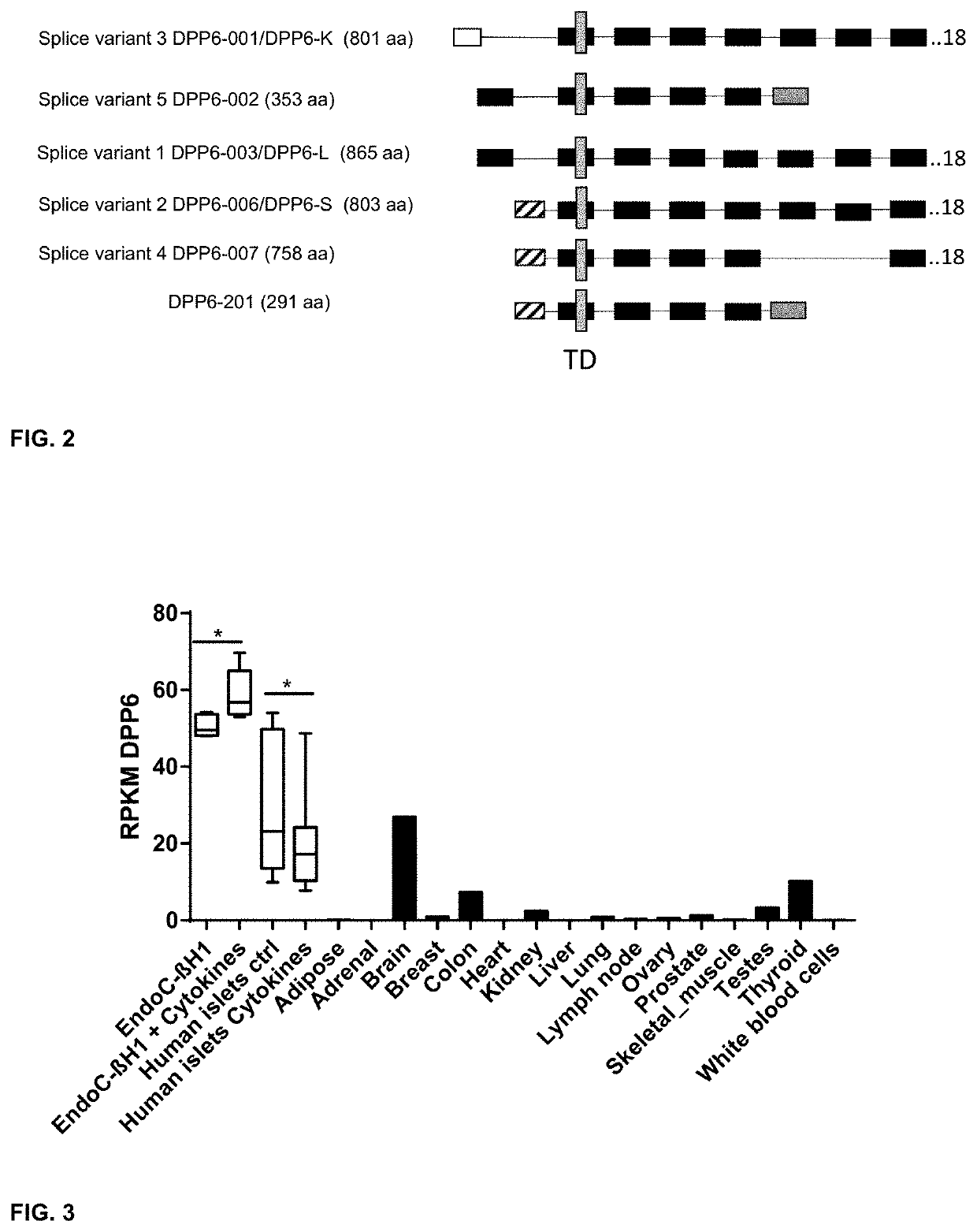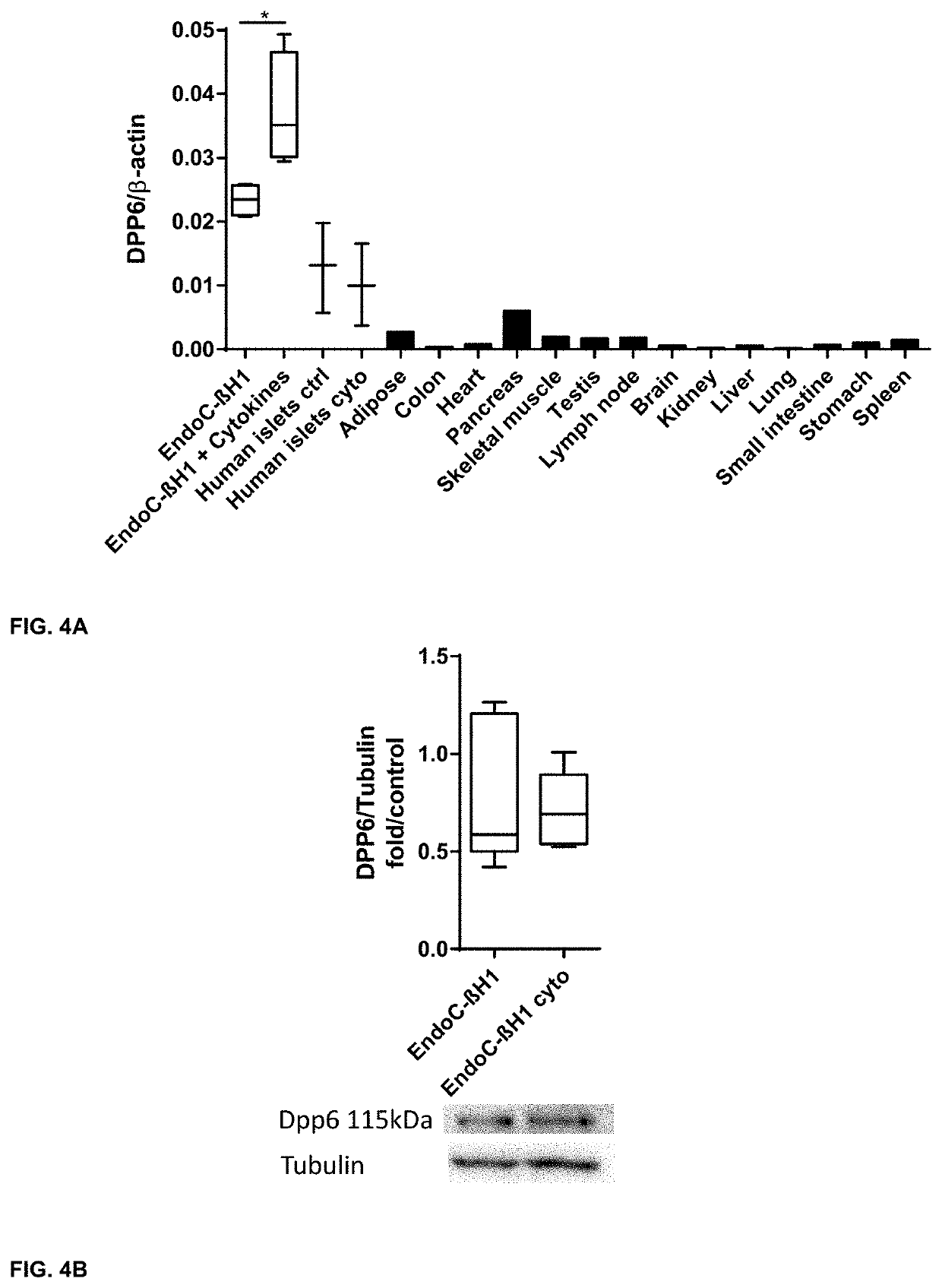Biomarker expressed in pancreatic beta cells useful in imaging or targeting beta cells
a pancreatic beta cell and biomarker technology, applied in the field of medical devices, can solve the problems of not being able and unable to predict individual t2d patients' glucose tolerance,
- Summary
- Abstract
- Description
- Claims
- Application Information
AI Technical Summary
Benefits of technology
Problems solved by technology
Method used
Image
Examples
example 1
Selection Strategy for the Identification of Beta Cell Specific Plasma Membrane Proteins and Validation of the Islet Specific Expression of the Selected Biomarkers
[0293]Material and Methods
[0294]Ethical Statements
[0295]Human pancreatic islet collection and handling were approved by the local Ethical Committee in Pisa, Italy and performed as previously described (1). Female SCID CB-17 / Icr-Prkdcscid / Rj mice (Janvier labs, Le Genest-Saint-Isle, France), were used according to the rules of the Belgian regulations for animal care, with approval by the Ethical Committee for Animal Experiments of the ULB, Brussels, Belgium.
[0296]Cell Culturing, Generation of DPP6 Overexpressing Cells and Cytokine Exposure
[0297]To generate DPP6 overexpressing cells the Chinese Hamster Ovary (CHO) cells (ATCC, Manassas, USA) were selected for these experiments, as they do not express Human DPP6. CHO cells were cultured in Ham's F-12 Nutrient mix+GlutaMax, supplemented with Penicillin-Streptomycin and 5% Feta...
example 2
Identifying and Validating Specificity of Nanobodies Against DPP6
[0313]A recombinant extracellular domain protein (SEQ ID NO.3) was used as a source to generate nanobodies. This protein was used to immunize a dromedary, and a phage-display nanobody library from these animals was generated and biopannings were performed with said phage-displayed nanobody library and the resulting nanobodies were screened for binding to the recombinant protein.
[0314]The sequences of the nanobodies retrieved are displayed in FIG. 7 and are annotated with the IMGT numbering (international ImMunoGeneTics information system), indicating the CDRs accordingly. SEQ ID No 8 represents the heavy chain variable domain sequence and the sequence of the respective CDRs of the nanobody are defined by the sequences in the following table:
[0315]
NbIMGTCDR1CDR2CDR3namesequencesequencesequencesequence4hD29SEQ ID NO. 8SEQ ID NO. 9SEQ ID NO. 10SEQ IDNO. 11
[0316]The affinity of different Nbs was analysed versus the human D...
PUM
| Property | Measurement | Unit |
|---|---|---|
| diameter | aaaaa | aaaaa |
| dissociation constant | aaaaa | aaaaa |
| dissociation constant | aaaaa | aaaaa |
Abstract
Description
Claims
Application Information
 Login to View More
Login to View More - R&D
- Intellectual Property
- Life Sciences
- Materials
- Tech Scout
- Unparalleled Data Quality
- Higher Quality Content
- 60% Fewer Hallucinations
Browse by: Latest US Patents, China's latest patents, Technical Efficacy Thesaurus, Application Domain, Technology Topic, Popular Technical Reports.
© 2025 PatSnap. All rights reserved.Legal|Privacy policy|Modern Slavery Act Transparency Statement|Sitemap|About US| Contact US: help@patsnap.com



